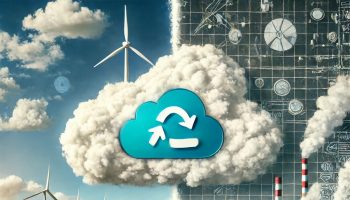As we move into 2023 and beyond, every organization will eventually adopt cloud models. Existing cloud businesses will look at ways to streamline their processes for rapid growth and better business continuity.
Here are my views on top cloud computing trends that organizations need to watch out for.
Multi-cloud development would be the new normal.
Cloud forms the backbone of many critical applications, and with many significant outages from major cloud providers last year, it would be essential for enterprises to embark on a Multi-Cloud strategy for mitigating risks around a single point of failure.
Critical applications and governance functions can employ a cloud strategy that includes a Hybrid with a Multi-Cloud strategy. In a Hybrid with a Multi-Cloud strategy, applications run on on-premises and multiple cloud providers, providing data sovereignty, disaster recovery, and risk mitigation while simultaneously being agile and scalable.
A critical factor would be to design and build cloud-native applications that can run and scale on any cloud environment and a management platform that helps manage hybrid and multi-cloud environments.
You would see many Hybrid and Multi-Cloud space developments – from infrastructure modernization, mainframe and legacy migration, data mobilization, integration, tooling, and skilling for a hybrid with multi-cloud adoption.
Sustainable computing, tools, and insights
All the major cloud providers have already embarked on decarbonizing their data center. For instance, Google Cloud is already carbon neutral today and plans to run on carbon-free energy, 24/7, by 2030.
This year we saw a glimpse of the carbon footprint calculators provided by some major cloud vendors, allowing you to measure and track carbon emissions associated with your cloud projects. We saw AWS and Microsoft Azure launching sustainability as one of the pillars of their well-architected framework.
However, some issue remains – the emission data offered by the cloud provider is far from real-time to provide meaningful insights, and data is available either bi-weekly or even a few months old. The methodologies used for calculations across providers are different. There is no tooling around DevOps that includes sustainability as one of the core principles.
This year, we would see momentum gaining around sustainability and tool support offered by cloud providers.
Unified Serverless architecture
Serverless technology removes the overhead of managing the cloud infrastructure and allows organizations to focus on executing business functions.
The serverless momentum will continue to grow even further, and we will see new serverless options and the addition of the serverless capability to existing offerings.
Designing cloud applications with serverless options would be key criteria going forward from a cost and optimization perspective, and in turn, cloud platforms would use intelligent computing and scalable options based on application demands. This would lead to better resource utilization for development workloads and even for start-ups and small-scale businesses to quickly try out and scale ideas/products in production without worrying about constant cloud costs. With the move towards sustainable computing, serverless would be a good option for cost, optimization, and keeping the carbon footprint of your application under control based on your workloads and application requirements.
You might see standardization evolve in this arena, which allows you to run serverless technology in a vendor-neutral way across hybrid and multi-cloud providers. The way Kubernetes streamlined container-based development across cloud vendors, we probably would see similar specifications and standards for serverless technology.
Optimization – DevOps, MLOps, FinOps, GreenOps
Optimization would be one of the key trends, focusing on streamlining end-to-end development and deployment and balancing multiple trade-offs like process timelines, cost, accuracy, cloud regions, latency, and sustainability. Cloud vendors or third-party providers would provide tools to help optimize the overall cloud development and deployment lifecycle.
Web 3.0 Tools – POC and Evaluations
The experimentation phase will start on how Organizations will adopt Web 3.0 to drive new business outcomes. Tooling from cloud vendors, standardization, and early POC will drive this area forward. The move towards digital currency (not bitcoins, but concepts like Digital Rupee), standardizing digital asset lifecycle (standards beyond NFTs) for storage and consumption, and new immersive applications (for industries like ed techs) will gain traction.
What other about services?
Apart from the above predictions, we will continue to see advancements in ML/AI, data services, cloud security, and edge computing offered by cloud providers.




